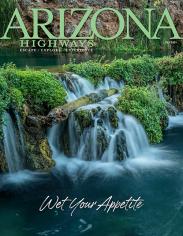Spring Valley Loop
Kaibab National Forest, Parks
People have been traveling across Northern Arizona for thousands of years. First they journeyed on foot, then by covered wagon, next by train and eventually via a historic two-lane road. But when you’re speeding down one of the lanes of Interstate 40, it’s easy to skip past the region’s history and take in only as much as you can glimpse at 70 mph. That’s when it’s time for a much-needed detour on the Spring Valley Loop.
